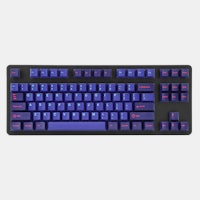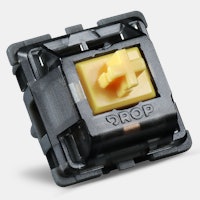Figure 1: My Imada force gauge machine gifted to me by Drop mid-collection of a Drop Holy Panda X force curve.
Over the course of the last year or so of writing switch reviews of my own, I’ve been integrating more and more data into my descriptions and comparisons of switches. This is seen no more clearly than in the dozens of wiggly-lined graphs, known as ‘Force Curves’, that now sprout up in the dozens on each of my latest reviews. While I’ve managed to avoid dragging the discussion of force curves into any of my short articles on Drop thus far, the increasing use of them throughout my work means I should probably get around to discussing them sometime soon. After all, while I live and die by this kind of information for switches, I fully well understand that I am more obsessed about switches than the vast majority of (admittedly kind of already weird) mechanical keyboard enthusiasts. However, I think that knowing a thing or two about force curves could make a big difference in the hunt for your perfect, endgame switches. So, here’s the quickest and easiest introduction to force curves and how to read them so you can make the most informed switch purchasing decisions.
At the absolute most basic level, a ‘force curve’ is a graph that shows you how heavy a switch is at every single stage of it being pressed in and released. Or, rather, it’s simply an objective, graphical representation of how the switch feels in your hand! More specifically, a force curve depiction and what you actually feel when pressing in a switch are the exact same thing - the complex interaction of the spring, the stem, and the leaves of the switch that complete a circuit to register a keystroke in your keyboard. While these force curve diagrams were once upon a time pretty rare to see on vendor’s and manufacturer’s sales pages, they are becoming increasingly more common with new switch manufacturer marketing techniques and a couple of enthusiasts collecting force curves of their own. (See the work from enthusiasts like HaaTa, Pylon, and even my own Force Curve Repository!) Regardless of who made the force curves that you encounter on a sales page or in a data repository, they almost always are displayed in the form of an x vs. y style of graph which plots force or weight (vertical) against displacement or stem travel distance (horizontal) and feature two curves - one for the downstroke of a switch (pushing it in) and one for the upstroke (releasing it). In the event that they aren’t labeled or color coded, the downstroke curve will almost always be the one that is higher up on the graph and can be read as if you were pushing in the switch by looking from the left end of the curve at 0 grams of force (gf) to the right end where it bottoms out, or reaches its maximum force. Here’s an example force curve with some labels to help digest all of that new information:
Figure 2: Cherry MX Red force curve diagram with basic labels.
Now while that high level explanation should seem easy enough to look at and understand, let’s go ahead and look at a few different force curves to develop an idea of what each of the Three Main Types of Switches look like in force curve diagrams. Starting with the force curve above this paragraph, this is one for a linear switch, specifically Cherry MX Reds. While everyone reading this probably already understands that a linear switch presses in and comes back with a straight-like fashion and absolutely no feedback in hand, many people wouldn’t have initially guessed that this also produces a straight-line force curve as well. That is because the force felt in a linear switch is linearly related to the amount that the spring is pushed in, and is influenced very little by the presence of a switch’s leaf. However, if you’ve got ridges or ‘bumps’ on the stem legs of your switch, pushing the stem down does not result in a smooth and straight glide between the stem and the leaves. Instead, these bumps and ridges interact with the leaves to produce a physical feedback known as a tactile bump. Similarly, tactile switches also have bumps in their force curves too:
Figure 3: Invyr Holy Panda force curve diagram with tactile curve-specific labels.
As can be seen above in the force curve diagram for the famous Invyr Holy Panda tactile switch, you can actually see the feedback that you feel in hand plotted out before you. While the switch starts its downstroke at a force around 45 gf, it quickly rises up to a peak of about 70 gf which then quickly dissipates down, well below the initial downstroke force until the switch equilibrates back to a final linear region. This is what you know as a tactile bump! As for the linear region at the end of the stroke, I often call this the ‘post-bump linear region’ of a tactile switch as this is the portion of the stroke where the stem and leaves almost fully separate and the force is only based on the compression of the spring. Much like with the in hand feeling of tactile bumps, force curves for tactile switches come in all shapes and sizes with some bumps being wide and flat, such as Drop Holy Panda X Clears, and others being shorter or having multiple bumps like the Zaku IIs. While these may be neat to look at from a purely analytical level, if you compare these curves against known tactile switches that you can test in your hands readily, you’ll begin to develop a better understanding of how to mentally ‘read’ these force curves. After doing it well over a thousand times like I have, you’ll begin to be able to physically guess what a switch feels like and pick out different features about its design, springs, and even its manufacturer based just on the shape of the curve.
Figure 4: Comparison of force curves between a flatter, wider tactile switch and a shorter, multiple-bumped one.
As for clicky switches, this is where the real complexity begins to set in. While you can still learn to recognize clicky switch force curves and also interpret them with the same fundamentals laid out above for linear and tactile switches, the wide variety of clickies out there don’t make for really easy ‘cut and dry rules’. Trust me, just take a look at my article titled ‘Clicky Switch Mechanisms: A Starter.’ So, without much else to it, I’ll present you with the force curves for a Cherry MX Blue and leave the interpretation of it up to you. (Know that most click jacket clicky switches do have force curves like this, though.)
Figure 5: A force curve diagram for Cherry MX Blue switches.
Whether you believe it or not, that is really all you need to know in order to start using force curves in your hunt for your next set of switches. While scrolling through existing repositories of force curves like my own will certainly help in growing your abilities, just try and keep your eye out for one in your next listing for switches and spend a few minutes trying to best interpret how it would actually feel in your hand. Or, if you’re wanting to window shop for switches a bit more casually, maybe you should check out my guide on ‘Switch Marketing Terms: What to Know and What to Ignore’.






























Over the course of the last year or so of writing switch reviews of my own, I’ve been integrating more and more data into my descriptions and comparisons of switches. This is seen no more clearly than in the dozens of wiggly-lined graphs, known as ‘Force Curves’, that now sprout up in the dozens on each of my latest reviews. While I’ve managed to avoid dragging the discussion of force curves into any of my short articles on Drop thus far, the increasing use of them throughout my work means I should probably get around to discussing them sometime soon. After all, while I live and die by this kind of information for switches, I fully well understand that I am more obsessed about switches than the vast majority of (admittedly kind of already weird) mechanical keyboard enthusiasts. However, I think that knowing a thing or two about force curves could make a big difference in the hunt for your perfect, endgame switches. So, here’s the quickest and easiest introduction to force curves and how to read them so you can make the most informed switch purchasing decisions. At the absolute most basic level, a ‘force curve’ is a graph that shows you how heavy a switch is at every single stage of it being pressed in and released. Or, rather, it’s simply an objective, graphical representation of how the switch feels in your hand! More specifically, a force curve depiction and what you actually feel when pressing in a switch are the exact same thing - the complex interaction of the spring, the stem, and the leaves of the switch that complete a circuit to register a keystroke in your keyboard. While these force curve diagrams were once upon a time pretty rare to see on vendor’s and manufacturer’s sales pages, they are becoming increasingly more common with new switch manufacturer marketing techniques and a couple of enthusiasts collecting force curves of their own. (See the work from enthusiasts like HaaTa, Pylon, and even my own Force Curve Repository!) Regardless of who made the force curves that you encounter on a sales page or in a data repository, they almost always are displayed in the form of an x vs. y style of graph which plots force or weight (vertical) against displacement or stem travel distance (horizontal) and feature two curves - one for the downstroke of a switch (pushing it in) and one for the upstroke (releasing it). In the event that they aren’t labeled or color coded, the downstroke curve will almost always be the one that is higher up on the graph and can be read as if you were pushing in the switch by looking from the left end of the curve at 0 grams of force (gf) to the right end where it bottoms out, or reaches its maximum force. Here’s an example force curve with some labels to help digest all of that new information: